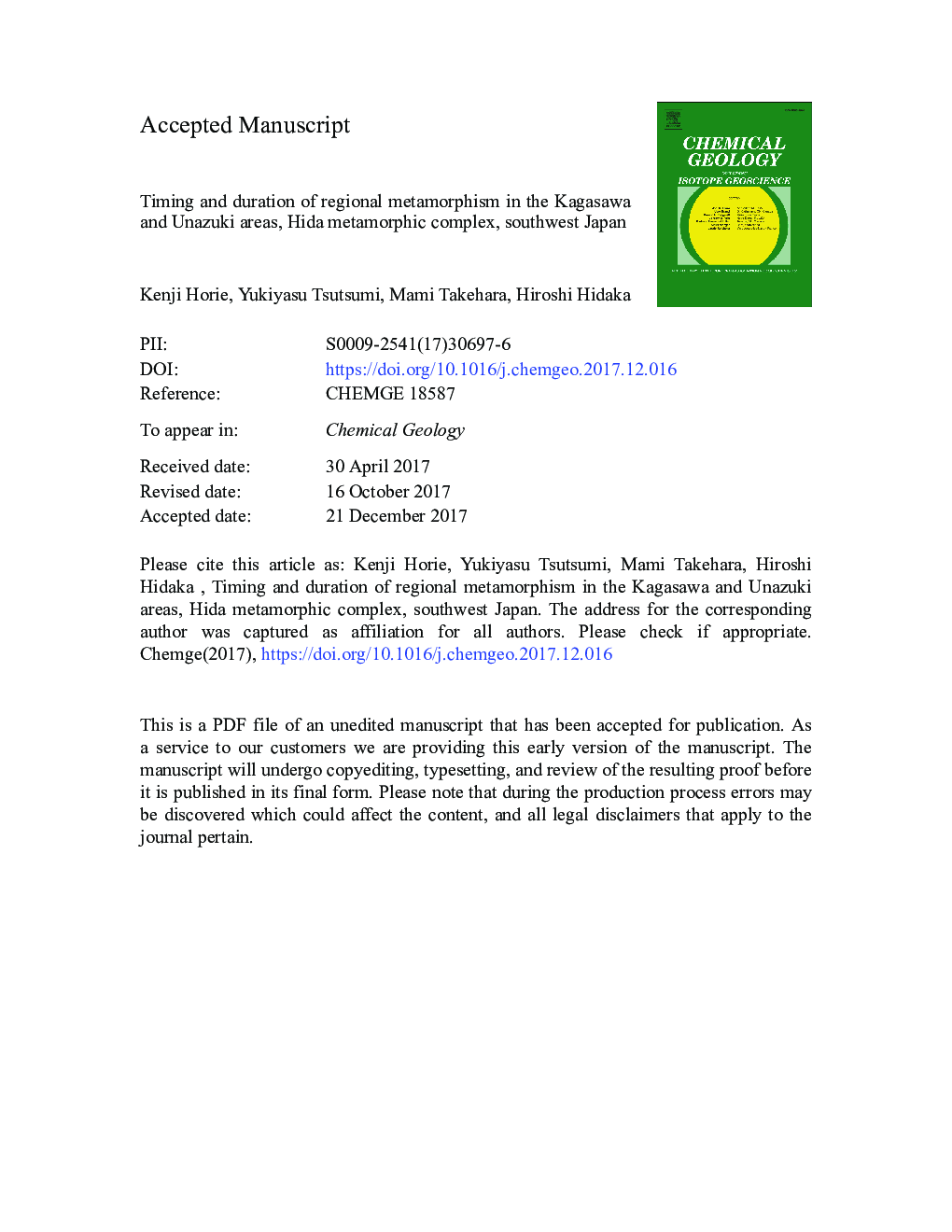| Article ID | Journal | Published Year | Pages | File Type |
|---|---|---|---|---|
| 8910256 | Chemical Geology | 2018 | 83 Pages |
Abstract
U-Pb zircon geochronology of two granite intrusions containing bluishâtint K-feldspars and two biotite-hornblende gneisses in the Kagasawa area, situated at the center part of the Hida metamorphic complex, southwest Japan, reveals the early Triassic low P/T metamorphism in the Hida metamorphic complex (251-247 Ma). The granite intrusions into the Hida gneiss occurred at two different stages (235.4 ± 1.6 Ma and 183.6 ± 1.8 Ma) and thermally affected the Hida gneiss. In the Unazuki area, situated at the northeast margin of the Hida metamorphic complex, a quartzo-feldspathic schist and a biotite granite containing a quartzo-feldspathic schist as xenolith yielded U-Pb zircon ages of 258.0 ± 2.3 Ma and 253.0 ± 1.9 Ma, respectively, which indicates that the medium P/T metamorphism in the Unazuki area occurred in late Permian. The similarity between the geochemical compositions in whole rocks and zircons of the quartzo-feldspathic schist and the granite suggests that felsic volcanics were deposited on basement rocks at 258 Ma and, after affecting the medium P/T metamorphism, residual felsic magma was exhumed while taking the Unazuki schists as a xenolith at 253 Ma. Although the time interval between protolith formation and post-peak regional metamorphism in the Unazuki area (0.8-9.2 Ma) is similar to that in the Kagasawa area (1-8.6 Ma), the different timing of the regional metamorphism indicates that the protolith of the Unazuki metasediments was deposited not on the proximal Hida metamorphic complex but on ancient rocks containing Eoarchean-Paleoproterozoic components of the North China Craton.
Keywords
Related Topics
Physical Sciences and Engineering
Earth and Planetary Sciences
Geochemistry and Petrology
Authors
Kenji Horie, Yukiyasu Tsutsumi, Mami Takehara, Hiroshi Hidaka,
